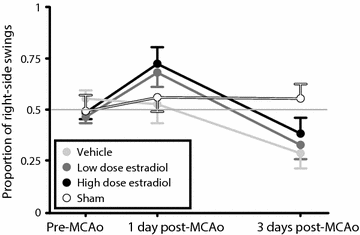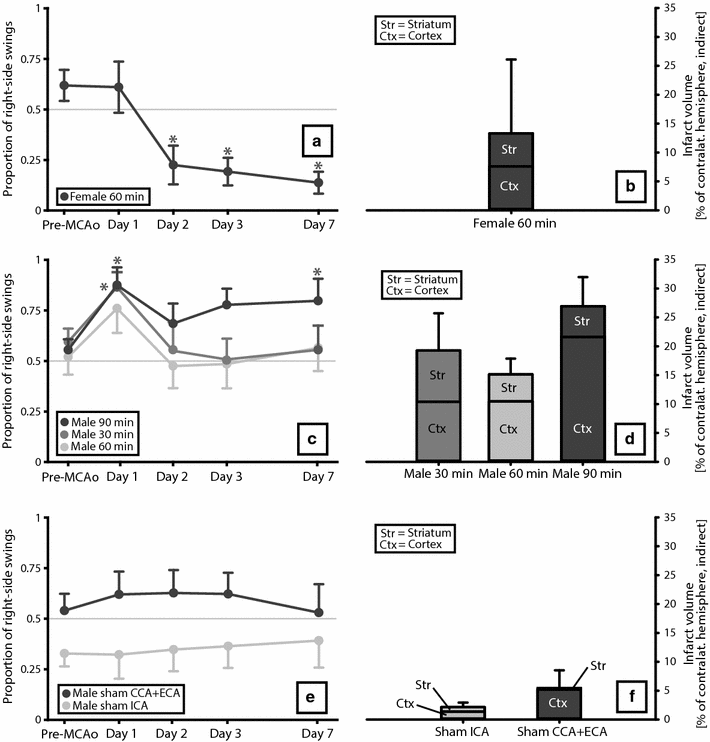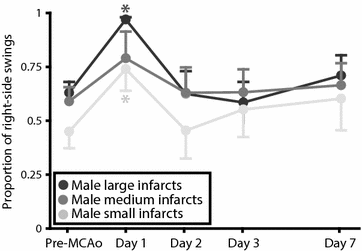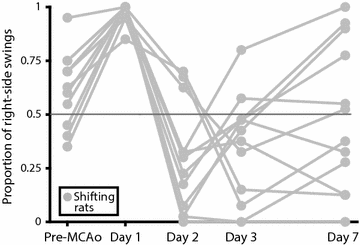Elevated body swing test after focal cerebral ischemia in rodents: methodological considerations
- PMID: 26242584
- PMCID: PMC4525734
- DOI: 10.1186/s12868-015-0189-8
Elevated body swing test after focal cerebral ischemia in rodents: methodological considerations
Abstract
Background: The elevated body swing test (EBST) is a behavioral test used to evaluate experimental stroke in rodents. The basic idea is that when the animal is suspended vertically by the tail, it will swing its head laterally to the left or right depending on lesion side. In a previous study from our lab using the EBST after middle cerebral artery occlusion (MCAo), rats swung contralateral to the infarct day 1 post-MCAo, but ipsilateral day 3 post-MCAo. This shift was unexpected and prompted us to perform the present study. First, the literature was systematically reviewed to elucidate whether a similar shift had been noticed before, and if consensus existed regarding swing direction. Secondly, an experiment was conducted to systematically investigate the suggested behavior. Eighty-three adult male and female Sprague-Dawley rats were subjected to MCAo or sham surgery and the EBST was performed up to 7 days after the lesion.
Results: Both experimentally and through systematic literature review, the present study shows that the direction of biased swing activity in the EBST for rodents after cerebral ischemia can differ and even shift over time in some situations. The EBST curve for females was significantly different from that of males after the same occlusion time (p = 0.023).
Conclusions: This study highlights the importance of adequate reporting of behavioral tests for lateralization and it is concluded that the EBST cannot be recommended as a test for motor asymmetry after MCAo in rats.
Figures






References
Publication types
MeSH terms
LinkOut - more resources
Full Text Sources
Other Literature Sources
Miscellaneous

